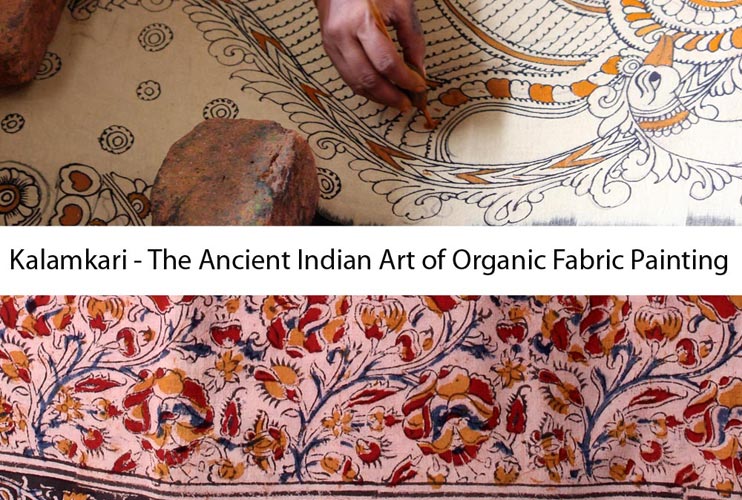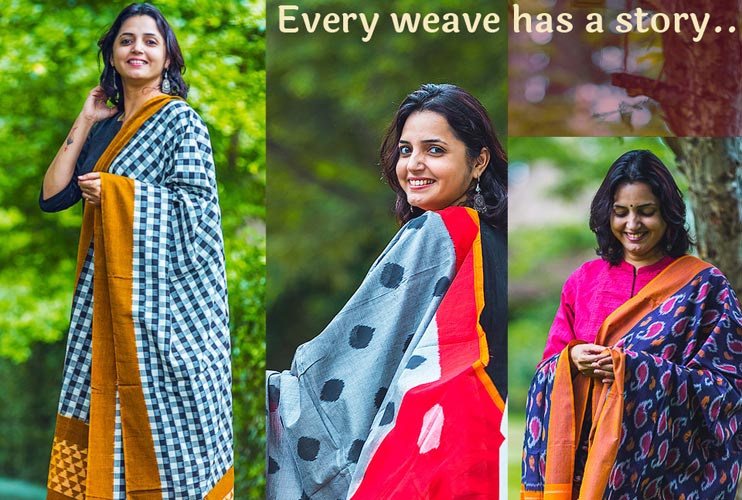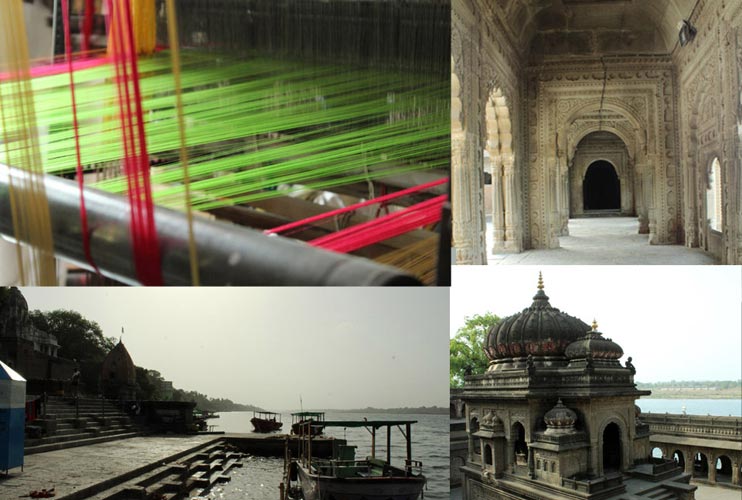Words kalam (pen) and Kari (craftsmanship), meaning drawing with a pen. Only natural dyes are used in kalamkari. Motifs drawn in Kalamkari spans from flowers, peacock, paisleys to divine characters of Hindu epics like Mahabharata and Ramayana.
The pen referred to in the term is a short piece of bamboo or date-palm stick, shaped and pointed at its end to form a nib.
Machilipatnam Kalamkari
Machilipatnam Kalamkari is the style of Kalamkari work which involves vegetable dyed block-painting of a fabric.
Srikalahasti Kalamkari
The Srikalahasti style of kalamkari, wherein the “kalam” or pen is used for free hand drawing of the subject and filling in the colors, is entirely hand worked. Ramayana, Mahabarata, Puranas and the mythological classics. This art involves 23 tedious steps of dyeing, bleaching, hand painting, block printing, starching, cleaning and more.
Kalamkari work goes through a lot of treatment before and after the painting is completed on the cotton fabric. It involves several washings, use of mordant, wax, milk, bleaching with buffalo or goat milk and the like. Thus, each fabric can undergo up to twenty washings before it is finished. Dyes for the cloth are obtained by extracting colors from various roots, leaves, and mineral salts of iron, tin, copper, and alum. Alum is used in making natural dyes and also while treating the fabric. Alum ensures the stability of the color in kalamkari fabric.
Pen Kalamkari
Pen Kalamkari art involves 23 tedious steps of dyeing, bleaching, hand painting, block printing, starching, cleaning and more. To prepare the cloth for painting, it goes through the application of many natural ingredients like buffalo milk, fermented jiggery, alum etc to ensures the stability of the color in kalamkari fabric. (And so is the typical smell of the pen kalamkari fabric !)
Dyes for the cloth are obtained by extracting colors from various roots, leaves, and mineral salts of iron, tin, copper, and alum. The pen referred to in the term is a short piece of bamboo or date-palm stick, shaped and pointed at its end to form a nib.
Painting
Very first sketching/outlining is a skilled job which is done by an experienced person. Once it’s ready, filling the colors in the design is comparatively an easy task, But it does require a precision. There is no chance to correct if anything goes wrong.
Washing
The printed cloth is washed in flowing water in a big pond. The canal must have sand underneath the water if not then the print will get smudged and the damage cannot be controlled.



